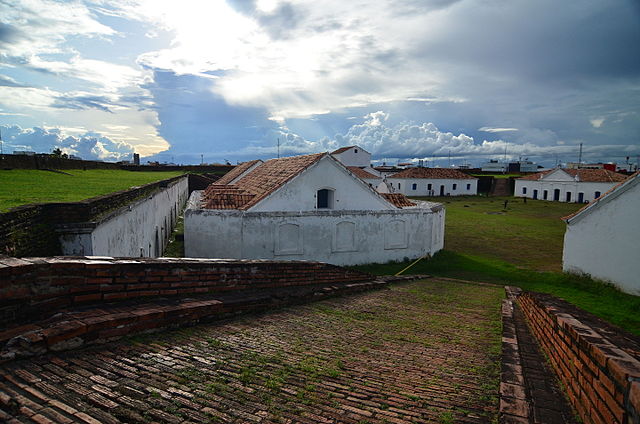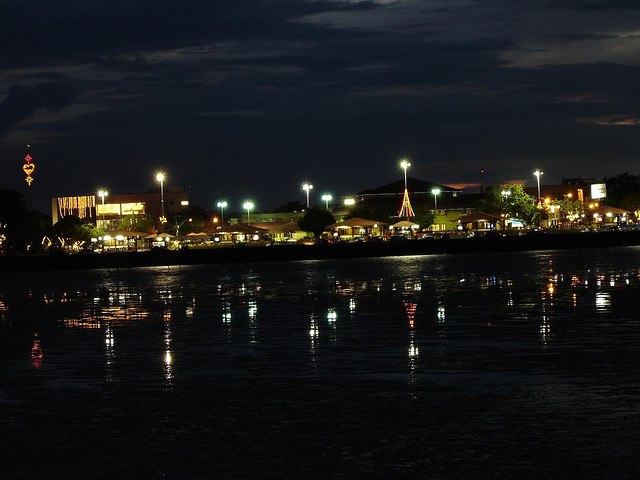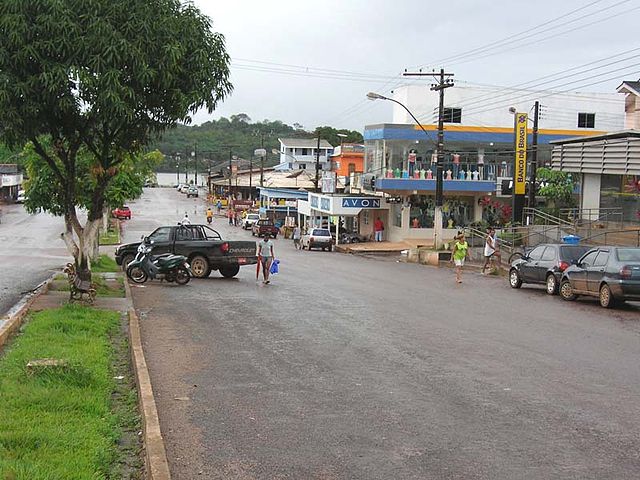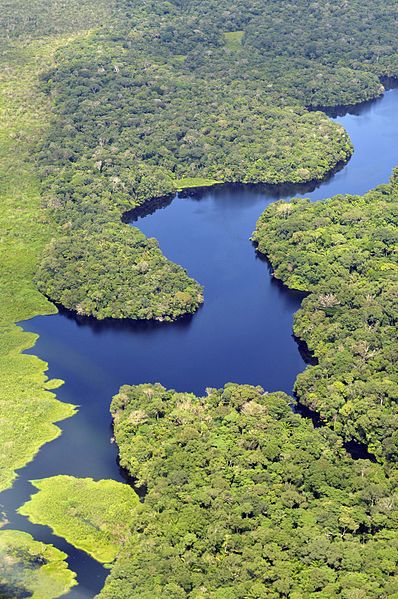Amapá ( ) is one of the 26 states of Brazil. It is in the North Region of Brazil. It is the second-least populous state and the eighteenth-largest state by area. Located in the far northern part of the country, Amapá is bordered clockwise by French Guiana to the north for 730 km, the Atlantic Ocean to the east for 578 km, Pará to the south and west, and Suriname to the northwest for 63 km. The capital and largest city is Macapá. The state has 0.4% of the Brazilian population and is responsible for only 0.22% of the Brazilian GDP.
São José de Macapá
Image: Noite em Macapá AP
Image: Parque Laranjal do Jari
Image: Oiapoque 2
The North Region of Brazil is the largest region of Brazil, corresponding to 45.27% of the national territory. It is the second-least-inhabited of the country, and contributes with a minor percentage in the national GDP and population. The area of the region is a little larger than India and a little smaller than the whole European Union. It comprises the states of Acre, Amapá, Amazonas, Pará, Rondônia, Roraima, and Tocantins.
Houses of ribeirinhos in the state of Pará.
Amazon rainforest, Northern Brazil
Manaus is the most populous city of the North region.
Image: Teatro Amazonas Atualmente 01








